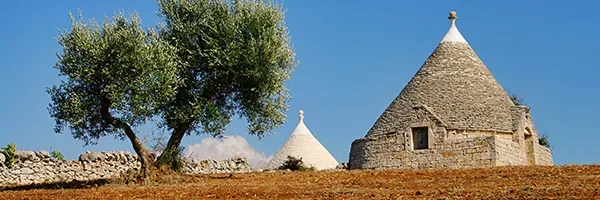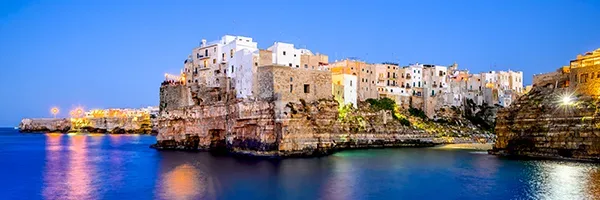STORIA
•
HISTORY
LUOGHI
•
PLACES
EVENTI
•
EVENTS
TRASPORTI
•
TRANSPORT
UTILITÀ
•
UTILITIES
STORIA • HISTORY

Da numerosi manoscritti ritrovati, alcuni risalenti al 992 d.C. la splendida cittadina di Polignano a Mare incastonata sulle favolose scogliere a picco sul mar Adriatico, ha una storia molto antica e stando ad alcuni autorevoli studiosi, l’antica città greca di Neapolis potrebbe essere una delle due colonie che nel VI secolo a. C., Dionigi II di Siracusa fondò sulle coste adriatiche. Secondo alcune indagini archeologiche, ci sarebbe stato un villaggio risalente all’età del bronzo e che grazie alla sua posizione strategica caratterizzata dai tanti approdi naturali, divenne un importante scalo portuale.

From numerous manuscripts found, some dating back to 992 AD. the splendid town of Polignano a Mare set on the fabulous cliffs overlooking the Adriatic Sea, has a very ancient history and according to some authoritative scholars, the ancient Greek city of Neapolis could be one of the two colonies that in the sixth century BC. C., Dionigi II of Syracuse founded on the Adriatic coast. According to some archaeological investigations, there would have been a village dating back to the Bronze Age and which, thanks to its strategic position characterized by many natural landings, became an important port.


Nel II millennio a.C., l’arrivo degli Iapigi spinse gli abitanti dei villaggi nel centro storico dove si formò il primo agglomerato urbano. Nel III sec. a.C. Polignano divenne punto di riferimento strategico per la vicina potenza Taranto: i Romani decisero di far passare dal paese la via Traiana che collegava la capitale dell’Impero a Brindisi. Con l’avvento dei Normanni ritornò il Cristianesimo e i fasti del Paese crebbero, soprattutto grazie all’opera dei Benedettini, presenti e radicati sul territorio con due monasteri. L’Abbazia di San Vito è tutt’ora visibile in tutto il suo splendore.

In the second millennium BC, the arrival of the Iapigi pushed the villagers to the historic center where the first urban agglomeration was formed. In the third century. B.C. Polignano became a strategic reference point for the nearby power of Taranto: the Romans decided to pass the Via Traiana from the town, which connected the capital of the Empire to Brindisi. With the advent of the Normans, Christianity returned and the splendor of the country grew, especially thanks to the work of the Benedictines, present and rooted in the area with two monasteries. The Abbey of San Vito is still visible in all its splendor.


La dominazione Angioina rese ancora più fitti e fruttuosi i rapporti commerciali con altri costieri e molti ricchi mercanti veneziani, elessero Polignano come loro dimora, tanto che ancora oggi nel centro storico è presente il palazzo del Doge. Fino ai primi dell’800 gli Aragonesi difesero strenuamente la città per più di un secolo dall’attacco dei saraceni. Oggi Polignano a Mare, per le sue bellezze naturali è diventato un paese turistico di fama mondiale.

The Angevin domination made commercial relations with other coasts even more dense and fruitful and many wealthy Venetian merchants chose Polignano as their home, so much so that the Doge’s palace is still present in the historic center. Until the early 1800s, the Aragonese strenuously defended the city for more than a century from the attack of the Saracens. Today Polignano a Mare, thanks to its natural beauties, has become a world famous tourist town.
